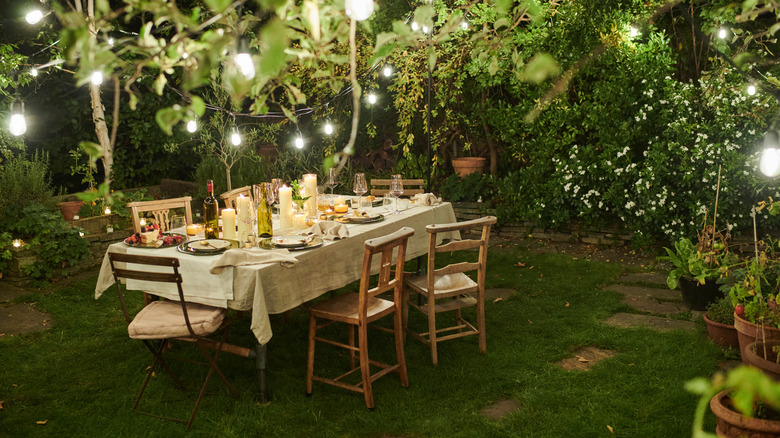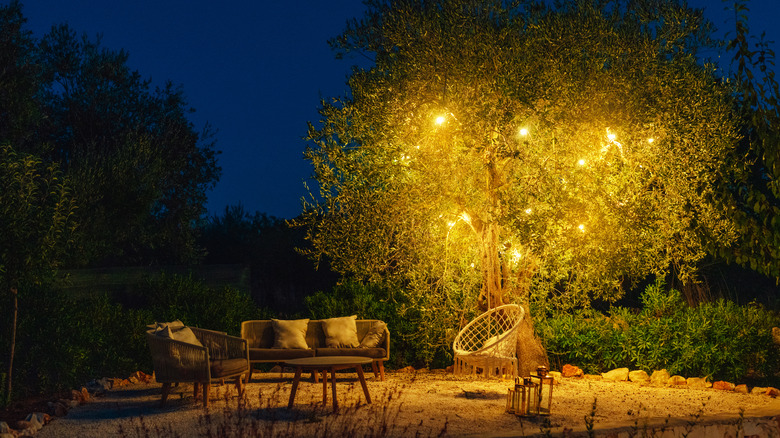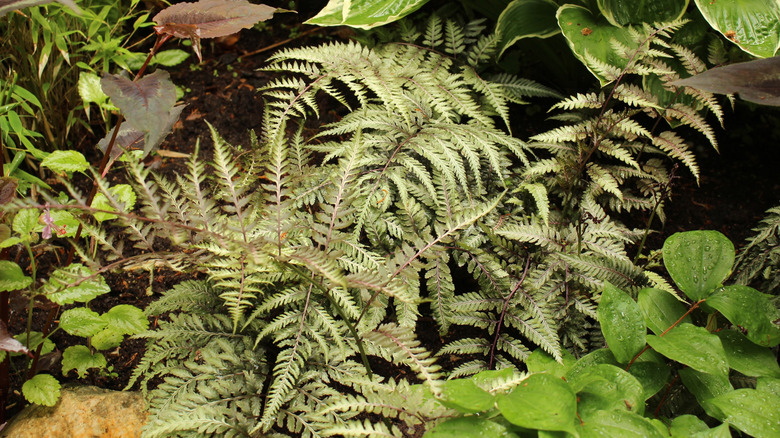The Dramatic Gardening Trend That Will Light Up Your Whole Yard
There is something magical about a garden under a starry night sky; something that made even legendary artists and poets like Vincent van Gogh and Emily Dickinson stop and admire the beauty. In many periods, including ancient India, medieval Japan, and 19th century United States, you'll find examples of emperors, landscape architects, and designing enthusiasts alike trying to make the night come alive with their fascinating attempts at creating moon gardens. Further, respect for the astrological zodiac and lunar movements have also influenced humans towards trends like gardening by the moon. But has progress over the years made such distinctive artforms in gardening obsolete? Not quite. A current garden trend is moonlighting your plants to capture the effect of the moon every night. With a little bit of innovation in soft-hued lighting and the knowledge of the right design details, you can "moonlight" your garden into a mystical, ethereal retreat.
In this case, moonlighting is a lighting design trend that successfully mimics the luminescent effect of the moon to create breathtaking outdoor gardens that ooze the charm and tranquility of a naturally moonlit space. This is usually done with the help of lights suspended high above your garden to create a soft glow over the plants, pathways, and seating arrangements below. Once executed correctly, this addition to your lawn or patio can create an effect that is capable of becoming the envy of your entire neighborhood.
How to moonlight your garden the right way
Like all good things, moonlighting doesn't just merely happen by hanging a few lanterns from low-hanging branches and expecting a stellar, jaw-dropping effect. In fact, you should always seek some level of professional help to get the wiring or the tree-climbing part of the deal done perfectly. The idea is to create soft, warm, subtle light that shines from above to below at an angle to recreate the light of the moon.
The statement trees in your garden are some of the best candidates for mounting lights for a downward, angled glow, especially if they have lots of foliage that can scatter the light to create beautiful patterns of illumination and shadows. You can also use the eaves of your building or pergola beams for the same purpose if they happen to be in the right place — that is, around areas like the patio, pathways, and garden beds. Using lower wattage, warm-toned bulbs here will come in handy for creating more softness in the illumination, instead of the harsher glow of high-wattage bulbs or floodlights.
The height at which you mount the lights is another key consideration for moonlighting. Mounting lights low on the trees will not create anywhere the same effect as when they are mounted higher. About 20 to 25 feet up in the trees is just the right height. The angle of the lights is also crucial to avoid glare. Keeping the lights low will not only defeat the purpose of creating a natural effect, by being glaringly obvious to the guests, but it can also be uncomfortable for the eyes. Furthermore, the lights must also be angled in a way so that it gets filtered by the leaves and branches to create the desired shadow play.
Additional details to make your moonlight garden perfect
Design enthusiasts who like going the extra mile also try to imitate the natural color of moonlight as closely as possible. This means recreating the silvery-white or blue tone you see in natural landscapes (or Twilight movies!), whether it's through the use of lights or plant choices. This can be especially tricky since having a slightly deeper shade of blue often results in a nightclub kind of vibe, which can impart an artificial air to the entire arrangement. Therefore, always go for a lighter and more subtle shade of blue.
Moonlighting strikingly comes to life when you have certain reflective elements in your garden, as well. For instance, if you have a small pond or a pool in your yard, don't let it fall prey to the doom and gloom of darkness at night. Instead, install a fixture close to the water body and let the soft light shimmer on its surface to create an idyllic setting you only find in novels, in addition to creating a Zen ambiance in your yard.
When it comes to picking the right plants for your moonlight garden, the plants that naturally shine in the dark, or those with white foliage, stand out. To create this design, it's easiest to stick with cool shades of foliage and flowers. These cool colors can be found in plants like the Japanese painted fern (Athyrium niponicum pictum), spotted deadnettle (Lamium maculatum), and ground covers like silver ponysfoot (Dichondra argentea 'Silver Falls'), which naturally include a lot of white and silver.


